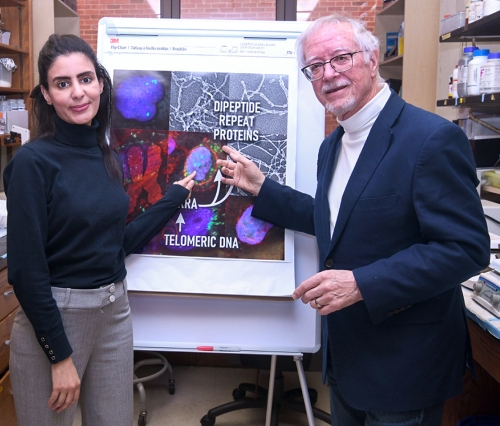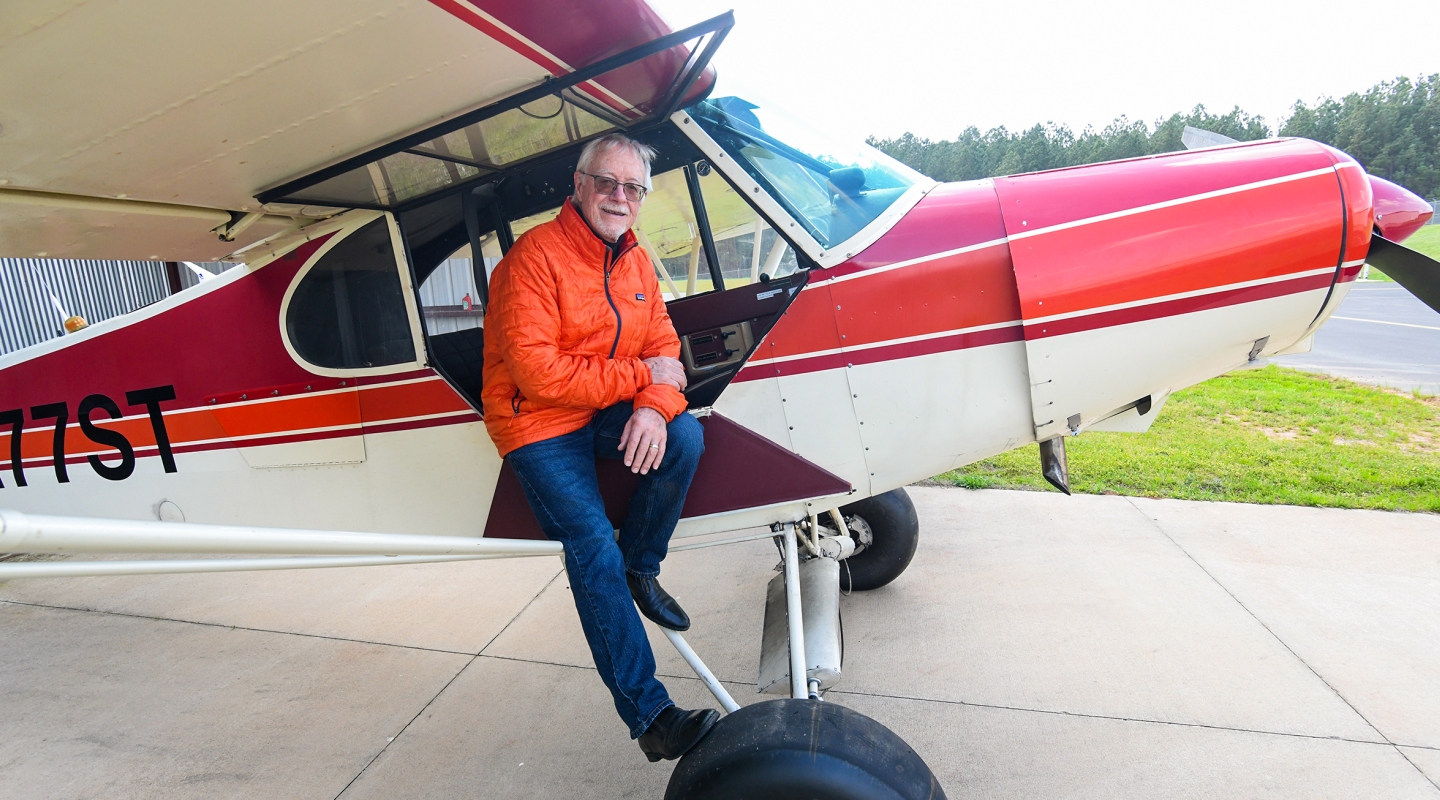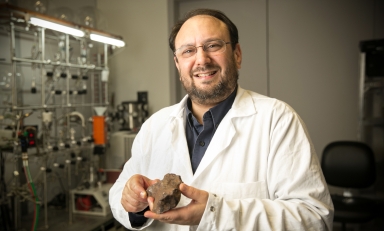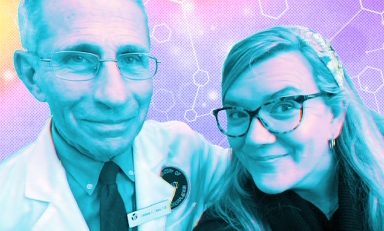Jack Griffith ’64 is still flying high after decades of medical discoveries—and retirement’s not in his DNA
Jack Griffith ’64 has always been attracted to new frontiers. He grew up on the rim of the Arctic Circle when Alaska was still a territory and started flying bush planes as a teenager. Even now, he still tries to scrape his plane’s wings on the mountainsides when he flies through narrow Alaskan valleys—a dangerous feat in less experienced hands.
Attracted in part by the first nuclear reactor at an undergraduate school in L.A., Griffith arrived at Oxy in 1960 with his bear rifle in tow (“I never did see any in the hills behind the College”) and spent four years squirreled away in the dorms as a physics major. Graduate work at Caltech placed him at the cutting edge of biophysics research, using powerful electron microscopes to develop methodology for visualizing DNA molecules and seeing how proteins sculpt DNA. “This led to the first images of the smallest subunits of our chromosomes,” says Griffith, who went on to do a postdoctoral fellowship with Nobel Laureate Arthur Kornberg.
Over the last 35 years at the University of North Carolina at Chapel Hill, Griffith has trained his electron microscopes on the ends of our chromosomes—tiny segments called telomeres. In 1999, Griffith showed that the ends of the telomeres are arranged into DNA loops, a giant leap in the understanding of human chromosomes.

More than two decades after that discovery, Griffith and his postdoc, Taghreed Al-Turki, have upended the telomere field again by showing that, in contrast to long-standing dogma, telomeres are capable of producing their own proteins—in this case two that are small and very unusual. Their recently published study in Proceedings of the National Academy of Science shows that one of the telomere-produced proteins is present at higher levels in some cancer cells. Furthermore, Griffith notes that yet-unpublished work suggests the possibility that both proteins may be generated by chronic inflammation, cancer, and exposure to stress and toxic agents.
“We’ve just cracked the surface but this is a paradigm-shifting discovery,” says Griffith, a member of the UNC Lineberger Comprehensive Cancer Center and Kenan Distinguished Professor of Microbiology and Immunology. He envisions a day when people will be able to get a simple blood test to check the status of their telomeres, much like diabetics check their A1C numbers to gauge how their body is handling the disease. “The hope is that this could be a flag that would lead to early diagnosis that could be lifesaving,” he says.
In 2017, Griffith’s sister, Jana Nelson, died from ductal carcinoma breast cancer, one of the cancer types that Griffith and Al-Turki’s unpublished studies suggest may contain higher amounts of the telomere proteins. “If she’d had an early test like the one we envision, the end result could’ve been really different,” he says.
Among Griffith’s honors—including election to the American Academy of Arts and Sciences in 2005 and the National Academy of Sciences in 2018—he is especially proud of the 2020 Progress in Photography Award from the Photographic Society of America for his work using photo-microscopy with the electron microscope to reveal details of DNA mechanics and organization. Photography is a longtime interest of his, dating back to snapping pictures of Alaska’s wildlife.
Away from the lab, Griffith finds refuge on the 13-acre “farmette” outside Chapel Hill that he shares with his wife, composer Karen Allred. The couple ride their horses on the property, and Allred teaches piano and holds concerts at her custom-built studio. Both are enthusiastic supporters of Occidental’s resurgent Music Department.
With retirement out of the question—“There’s too much to do,” he says—Griffith still finds time for his other pursuit, collecting and restoring vintage 1960s Jaguars. In his undergraduate days, he frequently sped down the highways in his 1957 Jaguar Roadster. Years later, he drove a car that embodied his twin passions: a cherry red Ferrari with custom plates that read TELOMERE.
Above: Jack Griffith ’64 with his 1959 Piper Super Cub.




